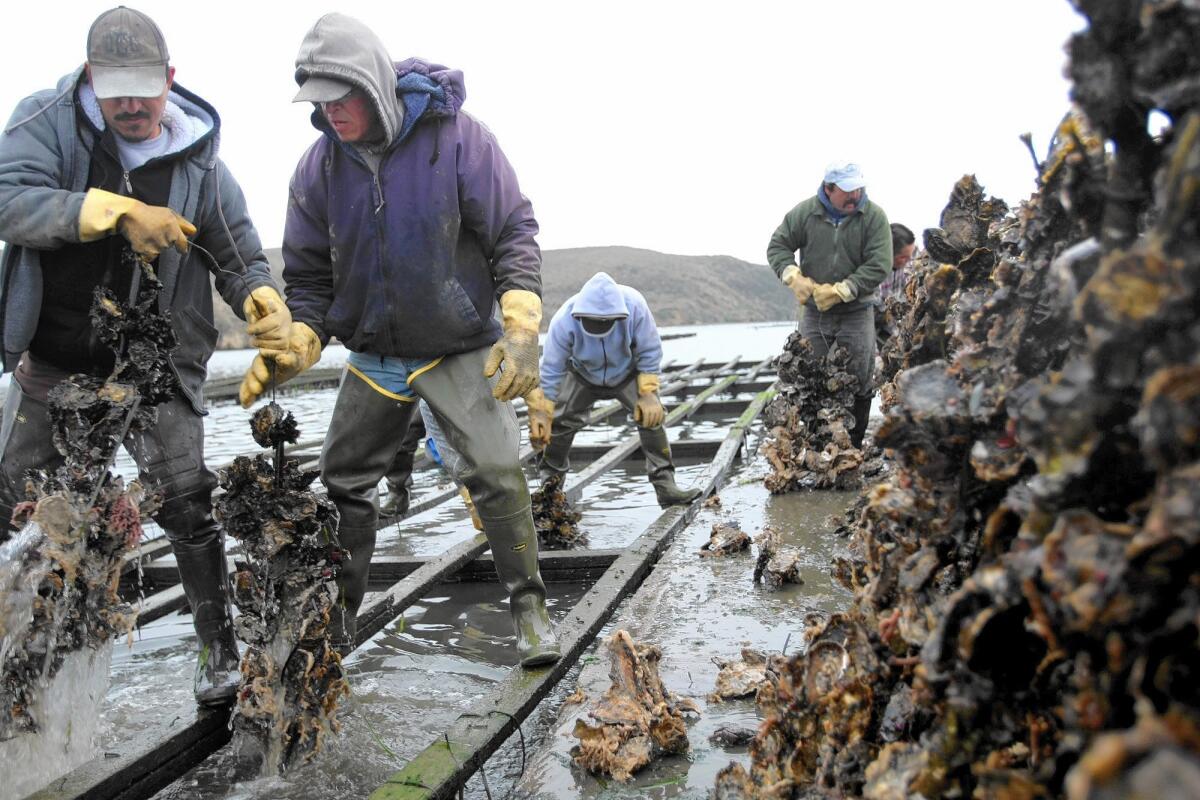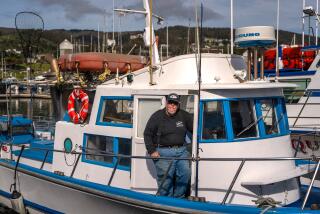California Journal: After a long battle, Drake’s Bay Oyster Co. packs it in

It’s the end of the line for Drake’s Bay Oyster Co.
On Dec. 31, after a long battle with the National Park Service, the California Coastal Commission, the Department of the Interior and wilderness advocates, owner Kevin Lunny and his family will vacate the starkly beautiful Drake’s Estero, a 2,500-acre estuary where some of the tastiest oysters on the West Coast have been farmed for more than half a century.
A 40-year lease agreement between the feds and the oyster farm’s original owners has expired. Former Interior Secretary Ken Salazar could have extended the lease for a decade, which was allowed by 2009 legislation that Democratic U.S. Sen. Dianne Feinstein sponsored. But in 2011, Salazar — fearing a policy precedent — decided that wilderness and oyster farming were mutually exclusive.
Starting next year, Drake’s Bay oyster lovers — like celebrity chef Alice Waters, who supported the Lunnys — will have to look elsewhere for their supply of slimy but delicious bivalves.
Lunny, 56, whose family runs the first organic-certified beef ranch in California, lost a fight between forces usually on the same side: sustainable farming enthusiasts and environmentalists.
“We’re cattle ranchers, so we were used to not having a direct connection with the people that enjoy our food,” Lunny told me. “But the oyster farm was different. We had 50,000 visitors a year. It connected us with people, with schools. It was a beautiful example of a place to connect farm to table. We fell in love with that.”
Lunny thought he had a fair shot to renew the lease because ranchers in other parts of the protected seashore were successful in doing so.
The complex nature of the struggle — environmental impact reports, marine life studies, federal, state and local permit processes, lawsuits, cease-and-desist orders — had to be boiled down. There had to be a good guy and a bad guy.
To Lunny supporters, the bad guy was the government, scheming to take away a precious local mariculture resource.
To the farm’s opponents, the Lunnys became the villains. Founding members of Marin County’s sustainable food movement, they were trashed as recalcitrant, water-polluting moochers who would exploit (and ruin) one of Marin County’s most beautiful seascapes.
Critics said the oyster operation disrupted harbor seal rookeries with their motorized skiffs, damaged the bay’s eelgrass, ruined the water quality and ran a shore operation whose ramshackle buildings were an eyesore. But the National Park Service’s own cameras proved the boats did not harm the seals. A 2009 National Academy of Sciences report said eelgrass had been damaged by the propeller blades of the oyster farm’s skiffs, but that the amount of eelgrass in the estuary had doubled between 1991 and 2007. Oysters are filters that improve water quality.
The Lunnys said they spent more than $300,000 cleaning up the farm when they first took over in 2004. They were never able to secure permits to remodel their buildings, they said.
A handful of legal firms, including one with tenuous ties to the conservative Koch brothers, worked on their case for free. The Lunnys were called tools of the tea party.
“It was heartbreaking,” said Lunny’s wife, Nancy, 55. “We were portrayed as being in bed with the Koch brothers. How do you fight that?”
::
In some ways, Drake’s Bay Oyster Co. is a casualty of hardening attitudes about human intrusion into wilderness.
In 1962, Congress created Point Reyes National Seashore, a wind-swept coastline that feels remote despite its location an hour north of San Francisco. Fourteen years later, President Ford signed the Point Reyes Wilderness Act, encompassing Drake’s Estero, which was designated as a “potential wilderness” because it contained a commercial enterprise.
But was the oyster company really meant to disappear at the end of its lease?
In 2011, retired legislators who helped establish the Point Reyes National Seashore told Interior Secretary Salazar that they had always intended for the oyster farm to stay in business.
“The issue of what to do with the oyster farm wasn’t even under contention,” former Rep. John Burton told the Marin Independent Journal. “Several things were grandfathered in, and aquaculture — oyster culture — was one of them.”
::
On a gray afternoon earlier this week, I turned off Sir Francis Drake Boulevard onto a road paved with crushed oyster shells and found myself at Drake’s Bay Oyster Co., a few shacks next to a rickety dock. The operation is in retreat. It’s not much to look at.
Production manager Paco Aceves, 46, showed me five round tanks where oyster larvae were once babied in warm, oxygenated water until they grew hardy enough to be planted in the estuary. A few yards away on a muddy beach, oysters sat rotting in mounds as big as igloos. “That’s just money going into the garbage,” Aceves said.
“They say they want to turn this place back into wilderness. What is wilderness? That’s a Coast Guard base right there,” he said, gesturing at some low buildings a couple of rolling hills away.
Later that evening, I met Kevin and Nancy Lunny for dinner in Point Reyes Station. They were sad but resigned. They spoke of plans for a restaurant they hope to open in Inverness next year, Drake’s by the Bay.
We began our meal with a dozen oysters. Half were from Drake’s Bay Co., half were from Tomales Bay.
The raw Tomales Bay oysters were pretty good.
But the Drake’s Bay oysters, grilled on the half shell, were out of this world.
Twitter: @robinabcarian
More to Read
Start your day right
Sign up for Essential California for news, features and recommendations from the L.A. Times and beyond in your inbox six days a week.
You may occasionally receive promotional content from the Los Angeles Times.







